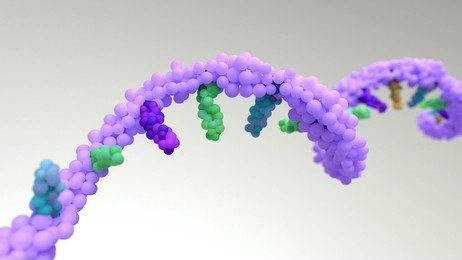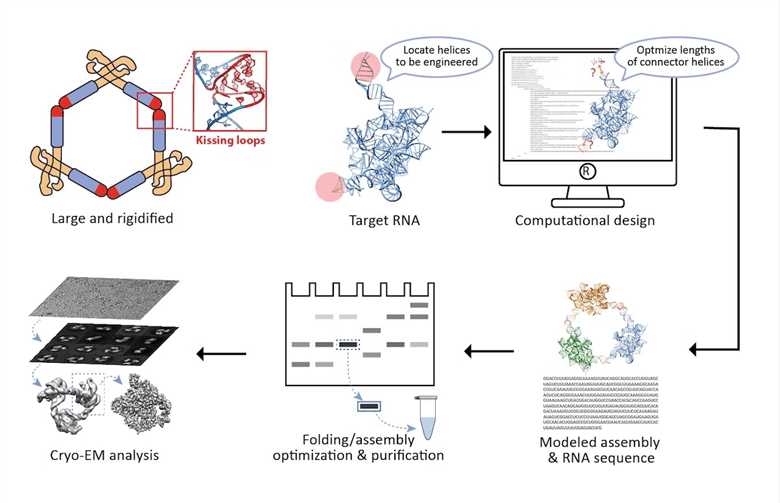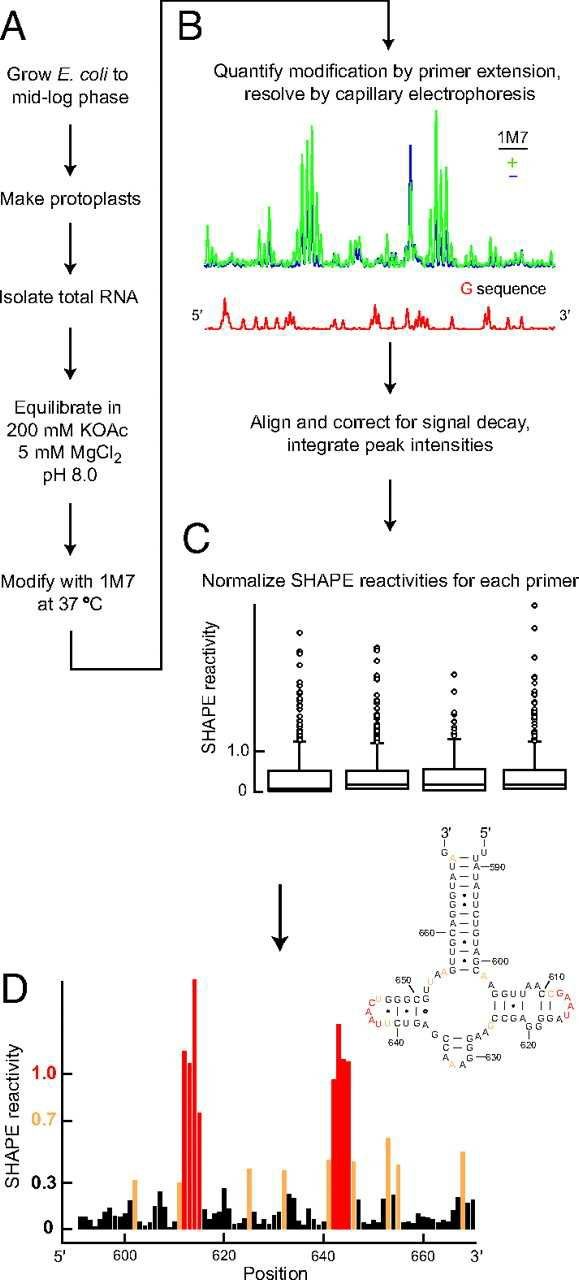RNA Structure Characterization
RNA molecules fold into spatial structures through intricate base-pairing patterns, and these structures underlie the functions that RNAs exercise such as catalysis, ligand binding, and scaffolding. High-resolution structural studies are essential to understanding the folding and function of various RNAs, and Creative Biostructure can help you determine this through a variety of methods.

- X-ray crystallography and nuclear magnetic resonance (NMR) spectroscopy provide atomic resolution views, while electron cryo-microscopy (cryo-EM) plays an increasingly important role in determining the structure of large and important RNAs at moderate resolution.
 Figure 1. Steps in X-ray crystallography.
Figure 1. Steps in X-ray crystallography.
- Atomic force microscopy (AFM)
AFM offers significant advantages in the study of RNA structure, allowing direct observation of the surface morphology and structural features of biological samples under gaseous atmospheres such as air and nitrogen, in a vacuum, or in a variety of solvent systems under near-physiological conditions. Sample preparation is relatively simple, eliminating the need for complex processes such as staining and embedding, and can be used to characterize biological samples of varying softness and even living cells. The ability to continuously monitor the kinetics of biochemical reactions allows for real-time studies of single molecules with high image reproducibility.
AFM-based research methods have grown into powerful nanoscale platforms that can characterize RNA with unprecedented precision, exploring its morphology, chemical information, electrical conductivity, electrostatic force, and biological properties, and manipulating it in three dimensions with molecular-level precision.
- ROCK technology
ROCK technology is breaking the current limitations of structural studies on RNA, allowing the near-atomic resolution structure of RNA molecules to be revealed, a process that is often difficult, if not impossible, to achieve using traditional methods. ROCK integrates RNA nanotechnology and cryo-EM methods, enabling the application of cryo-EM methods to the structural resolution of biological macromolecules containing RNA subunits. Creative Biostructure is also actively advancing its ability to energize many areas of basic research and drug development, including the burgeoning development of RNA therapeutics.
 Figure 2. Workflow of ROCK. (Liu, D., et al., 2022)
Figure 2. Workflow of ROCK. (Liu, D., et al., 2022)
- SHAPE
Chemical small molecule probes are widely used for the detection of RNA secondary structure, with selective 2´-hydroxyl acylation analyzed by primer extension (SHAPE) exploiting differences in the modifying activity of electrophilic reagents on bases in different states (paired or unpaired) for the detection. The characteristic SHAPE pattern can help to identify pseudoknot structures and dynamic changes in RNA secondary structure.
 Figure 3. Analysis of E. coli rRNA structure by SHAPE. (Katherine, E. D., et al., 2009)
Figure 3. Analysis of E. coli rRNA structure by SHAPE. (Katherine, E. D., et al., 2009)
- Sequencing
RNA sequencing studies are fundamental to the study of gene function and structure, enabling the study of gene function and its structure at a holistic level. With the continuous development of high-throughput sequencing and quantitative detection technologies, Creative Biostructure can achieve direct sequencing of RNA using single-molecule sequencing technology, which can provide deeper and more comprehensive information about the transcriptome by combining second-generation sequencing technology with single-molecule sequencing technology.
- Prediction of transcription start sites (TSSs)
- Strand-specific sequencing
- Detection of fusion genes
- Analysis of microRNA quantification
- Identification of RNA variable shear
The two main functions of RNA are to encode genetic information and to regulate gene expression. the versatility of RNA in forming simple and complex structures allows it to interact with other molecules in a variety of ways. Creative Biostructure helps you to resolve the structure of RNA at the atomic and molecular bonding level to gain a deeper understanding of the function of individual RNA molecules. Please feel free to contact us to start your RNA structure characterization project.
Ordering Process
References
- Liu D., et al. Sub-3-Å cryo-EM structure of RNA enabled by engineered homomeric self-assembly. Nature Methods. 2022, 19(5): 576-585.
- Deigan K E., et al. Accurate SHAPE-directed RNA structure determination. Proceedings of the National Academy of Sciences. 2009, 106(1): 97-102.

